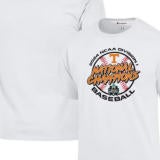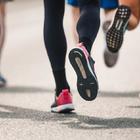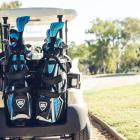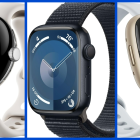
A daily trainer is the workhorse of running shoes, no matter what kind of runner you are. If you're a beginner or casual runner who only owns one pair of running shoes, it should be a daily trainer. If you're a more competitive or experienced runner building a running shoe rotation, a solid daily trainer is still the foundation of that rotation.
In both cases, it's the running shoe you'll log most of your miles in. So the best running shoes for daily runs need to be comfortable and durable enough to log all of those miles. If it's your only running shoe, it should also be versatile -- a good balance of weight, plushness and energy return -- so you can do a mix of endurance training and speed work with a single pair.
My daily trainer of choice is the Nike Pegasus 41, because it checks all of those boxes. It's comfortable, durable and a jack-of-all-trades. While it's a popular and versatile running shoe, it's not the best daily trainer for everyone. So I've also rounded up some of my other favorite running shoes that would be better daily trainers for other types of runners.
Best daily running shoe overall: Nike Pegasus 41

The Nike Pegasus 41 is my daily running shoe. Previously, I ran in a pair of Nike Pegasus 40s, but those have become my walking shoes after trying the new Nike Pegasus 41.
The biggest change between the Nike Pegasus 40 and the Nike Pegasus 41 is the switch from React foam to ReactX foam in the midsole. This is the first time Nike has added the upgraded foam to the Pegasus line. It promises over 13% more energy return compared to the React foam in the Pegasus 40.
After running in them, I can say that sounds about right. They felt slightly springier than the previous generation. As much as I enjoyed the comfort of the Pegasus 40s, I did notice that they were a bit heavy and not as responsive as other running shoes. Since I'm predominantly a midfoot striker, I also had trouble activating the Air Zoom units which are located in the heel and forefoot.
While those Air Zoom units haven't moved, the addition of the ReactX foam means I still get decent energy return, even on midfoot strikes. Then, when I switch to heel striking at higher speeds, the Nike Pegasus 41 feels even more propulsive than my Pegasus 40s.
The upper got a complete overhaul as well, making it noticeably lighter, softer and more breathable. I enjoyed the increased flexibility in the upper. It was enough to make my feet feel less restricted without being so flexible as to sacrifice stability.
The redesigned upper also helps make the shoe feel less bulky, without getting rid of the padding and structured support around the heel that makes them so comfortable for my maintenance runs. The total weight of the new shoes is about the same as last year's model, but these changes do make it feel lighter.
Note that some runners say the toe box runs narrow on these shoes. I haven't had an issue with it, but if you tend to opt for wider toe boxes, grab the wide version of these running shoes.
What the Nike Pegasus 41 is best for:
- Shorter distances (about 10 miles or less)
- Slow- to moderate-pace runs
- Heel strikers (but still decent for forefoot strikers)
- Runners who prefer a snug fit and narrow toe box
- Runners who want a balance of cushion and responsiveness
- Runners with neutral pronation
Shop men's sizes:
$140 at NikeShop women's sizes:
$140 at NikeCushiest running shoe for daily runs: Hoka Clifton 9
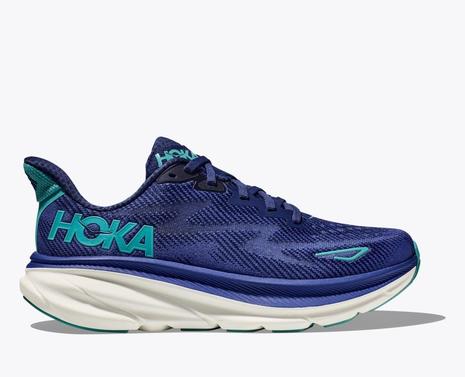
While the Nike Pegasus 41 is my personal daily trainer, I know there are plenty of runners who would prefer the Hoka Clifton 9 as their go-to running shoe. This comes as no surprise, but where the Hoka Clifton 9 shines is in the cushion. They're so soft and cushy underfoot that it feels like I could just keep running for miles without a second thought.
The Profly+ foam is lightweight (about an ounce lighter than my Nikes) but well-cushioned. This makes for cloud-like cushioning that felt just so luxurious, I wanted to keep them on even after my run.
Luxurious cushioning aside, I also enjoyed the milder rocker geometry. I've seen some Hoka running shoes that are so heavily rockered, they almost look like boats. The Hoka Clifton 9 is much more balanced. There is a gentle curve to help facilitate a smooth heel-to-toe transition, but it's not too exaggerated. It's just enough to let your foot glide easily through your stride.
Pair that balanced rocker geometry with the incredible cushioning and you get a running shoe that is just so effortless to run in. It's not the liveliest or fastest running shoe on the market, but it just feels so nice on runs where you don't care about your pace.
What the Hoka Clifton 9 is best for:
- Any distance, but best for longer distances
- Slow- to moderate-pace runs
- Heel strikers
- Runners who prefer a roomy toe box and flexible upper
- Runners who want the softest possible daily running shoe
- Runners with neutral pronation
Shop men's sizes:
$145 at HokaShop women's sizes:
$145 at HokaBest daily trainer for forefoot strikers: Adidas Adizero SL 2

There are a lot of reasons to choose the Adidas Adizero SL 2 as your daily trainer. They're soft yet energetic. They're lightweight and versatile enough to feel good on just about any run. But I think the cushion under the forefoot might be the most unique feature about these running shoes.
Many running shoes -- my Nikes and Hokas included -- feel very thin in the forefoot. That's not much of a problem for heel strikers, but it can be disappointing for a midfoot or forefoot striker.
The Adidas Adizero SL 2 featues full-length layer of Lightstrike Pro in the midsole. It's an energetic foam that feels softer than Nike's ReactX foam, but comparably snappy. With a 9 mm heel-to-toe drop, the stack height does shrink in the forefoot, but it still feels noticeably cushioned (and springy) on toe-offs. If you're predominantly a midfoot or forefoot striker, these will be a lot more fun to run in than anything else on this list.
Forefoot cushioning aside, I also enjoy how energetic and lightweight these are. They're comfortable and durable enough to serve as daily trainers, but snappy enough to race in. They aren't a super shoe by any means. But if your goal is just to make it to the finish line with a decent time, these would be a reliable shoe to get you there.
With a soft, snug upper that holds my foot down without pinching, I also like the fit of these Adidas. Though, that does likely mean they probably run a bit too narrow for runners with wide feet. And, unfortunately, they aren't available in wide sizes. But, if you typically like the fit of Nikes, you'll like the fit of these Adidas.
What the Adidas Adizero SL 2 is best for:
- Any distance
- Any pace
- Midfoot or forefoot strikers
- Runners who prefer a snug fit in the upper
- Runners who want a balance of cushion and responsiveness
- Runners with neutral pronation
Shop men's sizes:
$130 at AdidasShop women's sizes:
$130 at AdidasBest daily trainer for trail runners: Nike Pegasus Trail 5

If you do the majority of your running on trails, I recommend the Nike Pegasus Trail 5. This is essentially the off-road version of my favorite running shoes, the Nike Pegasus 41. When I run on trails, it's typically a mix of asphalt, wood and dirt, and I enjoy the grip and traction on the outsole of these trail running shoes across all of it. It's grippy enough to feel secure in my footing on loose gravel or dirt without being too sticky on the paved sections of my run.
Featuring the same ReactX midsole as the Pegasus 41, the Pegasus Trail 5 feels plush and springy. Despite the plush feeling of this shoe, on my latest run, I still felt like I had good ground connection -- maybe not enough to navigate super technical terrain or steep inclines, but plenty for the relatively level but uneven trail near me.
The upper is snug yet comfortable and breathable, so my foot felt secure without getting hot. I credit the flywire technology on the laces for that fit. It gives runners some room for adjustment to lock down your midfoot without feeling like the laces are digging into the top of your foot.
With that said, I can see the upper feeling too tight for runners who prefer flexibility. And anyone who thinks Nike shoes are too narrow in the toe box will have the same complaint here, especially since there isn't a wide version.
But if you like a snug fit like I do, the Nike Pegasus Trail 5 is a really enjoyable trail running shoe. It's lightweight, transitions smoothly between different terrains and doesn't feel hot even when running on a hot, humid summer afternoon.
What the Nike Pegasus Trail 5 shoes are best for:
- Mixed terrain trails
- Shorter distances
- Any pace
- Heel strikers (but still decent for forefoot strikers)
- Runners who prefer a snug upper and a narrow toe box
- Runners who want a balance of cushion and responsiveness
- Runners with neutral pronation
Shop men's sizes:
$150 at NikeShop women's sizes:
$150 at NikeBest daily trainer on a budget: Brooks Trace 2

If you refuse to spend over $100 on a pair of running shoes either because you're a beginner or because you just want to keep this hobby cheap, I get it. If I could go back in time to my past self, who was running in flimsy, no-name shoes, I'd tell her to get the Brooks Trace 2.
While I haven't personally tried these, they come highly recommended by budget-conscious runners. After comparing the specs to other running shoes, they look surprisingly well-built for the price point. Weighing in at under 9 ounces, they're about the same weight as my Nike Pegasus 40s while offering a cushier midsole with a 12 mm drop (compared to the 10 mm drop on the Pegasus 40). The Brooks Trace 2 also boasts a breathable upper and impressive durability, according to reviewers.
Overall, the running shoe is comfortable enough and, reportedly, durable enough to serve as your daily trainer, and it's dropped to clearance pricing now that this year's Brook Trace 3 is out. That means you can get a pair of reliable daily trainers for just $75 (reduced from $100).
What the Brooks Trace 2 is best for:
- Any distance
- Slow- to moderate-pace runs
- Heel strikers
- Runners who prefer a roomy toe box and a more flexible upper
- Runners who want a softer running shoe
- Runners with neutral pronation
Shop men's sizes:
$75 at BrooksShop women's sizes:
$75 at BrooksWhat is a daily trainer?
A daily trainer is just the running shoe that you do most of your running in. It differs from a marathon running shoe in that it doesn't have to be super lightweight or snappy. And it differs from a trail running shoe in that it doesn't need a specialized outsole with extra grip and traction -- unless, of course, you do most of your running on trails.
For more casual runners, your daily trainers might be the only running shoes you own. But for runners who follow more rigorous training plans, it's just one pair in a rotation of running shoes. In that case, the daily trainer is usually the running shoe you put on for your endurance runs (long distance, but slow pace) or your recovery runs (short distance and slow pace).
Since it's the running shoe you'll spend most of your time in, your top priorities should be comfort and durability. You want a midsole that feels great on day one, but also one that won't flatten out and lose its cushiness too quickly--something the airy, lighter foam in a racing shoe is prone to do. You want an outsole with the right traction for the surface you run on and the durability to not wear smooth before it's time to replace your shoe.
It can be something that's fun to run in, but you should stay away from any crazy tech like the carbon fiber plates found in super shoes or the orthotic tech found in stability shoes -- unless you actually have plantar fasciitis or another foot condition that requires extra support on a regular basis.

